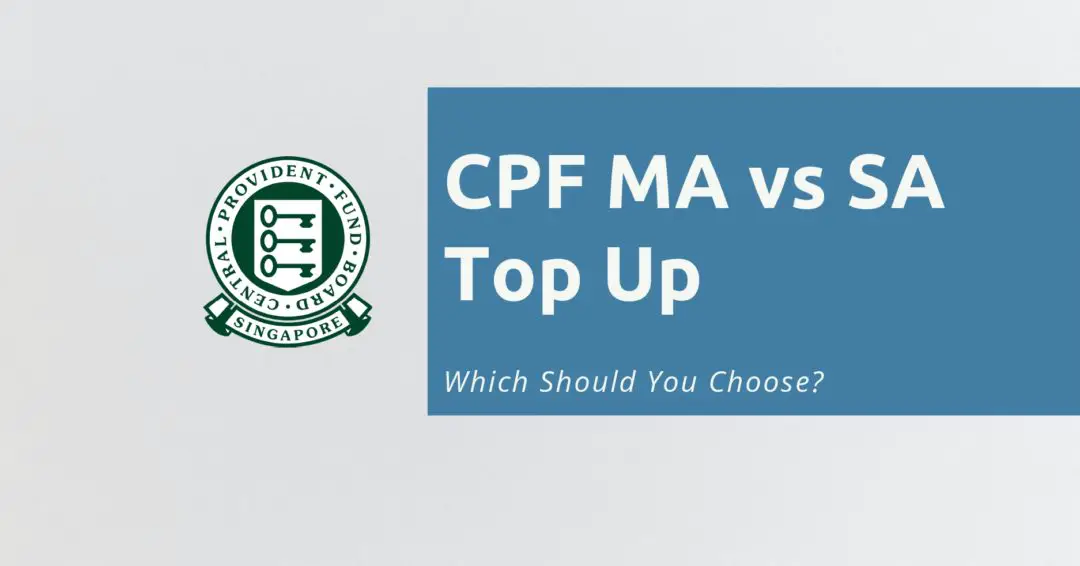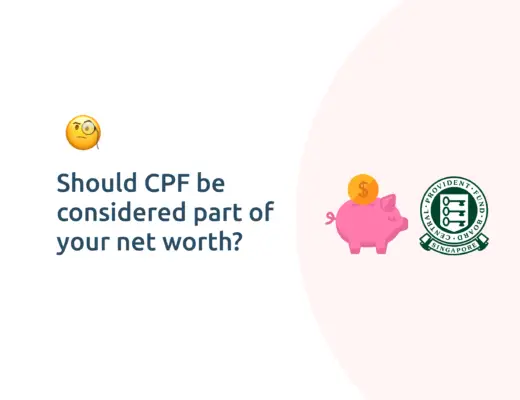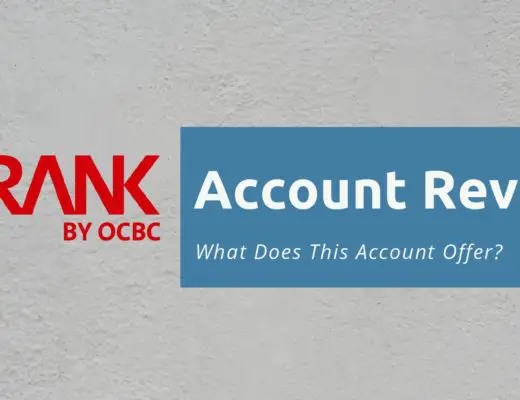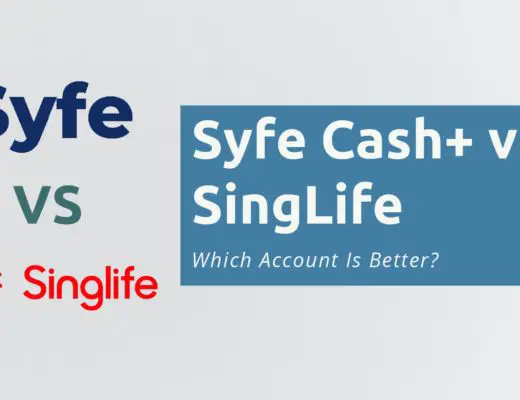Last updated on June 6th, 2021
When you are deciding on topping up your CPF, you are presented with 2 options: topping up your Special Account (SA), or your MediSave Account (MA).
Since both earn the same amount of interest, is there really a difference between topping up either account?
Here’s what you need to know.
Contents
Should I top up my SA or MA?
The decision to top up your SA or MA really depends on your financial goals. If you are aiming to build up your retirement nest egg, then you should top up your SA. However, if you want to build up your safety net for any health emergencies, topping up your MA may be more beneficial.
Here is an in-depth comparison between topping up either account:
Method of topping up
When you are topping up your SA, you will be using the Retirement Sum Topping-Up Scheme (RTSU).
Meanwhile, you will be making a voluntary contribution when you are topping up your MA.
Since you are topping up both accounts using different schemes, it will affect the limits of your top-ups.
Limits
Here are the limits to the top-ups you can make to your SA or MA accounts:
You can only top up to the FRS (< 55 years) or ERS (≥ 55 years)
The maximum amount that you can top up to your SA depends on your age:
| Age | Limit |
|---|---|
| < 55 years old | Full Retirement Sum (FRS) |
| ≥ 55 years old | Enhanced Retirement Sum (ERS) |
When you reach 55 years old, your SA becomes your Retirement Account (RA). You are able to top up cash into your RA until it reaches the Enhanced Retirement Sum.
This is a strategy you can use to receive a higher CPF Life payout.
If you are below 55 years old, you can only top up your SA to the Full Retirement Sum.
The FRS and ERS will increase each year to account for inflation. The sums that you need to reach will be locked in when you reach 55 years old.
There are 2 limits when topping up your MA
If you wish to top up your MA via the Voluntary Contribution scheme, there are 2 limits that you’ll need to take note of:
- CPF Annual Limit
- Basic Healthcare Sum
#1 CPF Annual Limit
The CPF Annual Limit is the maximum amount of mandatory and voluntary contributions you can make to your OA, MA and SA.
Mandatory contributions are the contributions that are required under the CPF Act. This includes:
- CPF contributions on the Ordinary and Additional Wages for employees
- MediSave contributions by self-employed persons
The current CPF Annual Limit is $37,740. As such, the maximum amount you can voluntarily top up to your MA is:
CPF Annual Limit ($37,470) – Mandatory Contributions
However, there is another type of voluntary contribution that you can make as well! This is when you contribute to all 3 CPF accounts, instead of just your MA.
The voluntary contribution you make to all 3 CPF accounts is the only way that you can top up your CPF OA with cash.
However, you will not be able to claim tax relief for this top up!
If you’ve made voluntary contributions to all 3 CPF accounts, you’ll need to deduct that amount to see the maximum limit you can top up to your MA each year.
#2 Basic Healthcare Sum
Another limit on the amount you can have in your MA is the Basic Healthcare Sum.
The Basic Healthcare Sum (BHS) is the estimated savings you need in your MediSave Account for your basic subsidised healthcare needs in old age.
CPF
This means that the maximum amount that you can have in your MA is the Basic Healthcare Sum (BHS).
If you make any top ups when your MA has already reached the BHS, it will be refunded to you.
As such, these are the 2 limits that you need to take note of when planning to top up your MA!
Uses
You are able to use the funds in your SA and MA for different purposes:
You can use your SA only for retirement-related uses
Your SA is primarily used to build up your retirement nest egg.
The funds in your SA will be used first to form your Retirement Account (RA) at 55 years old.
As such, any top-ups that you make into your SA are with the aim of building up your Retirement Account.
This will allow you to take one step closer to reaching your FRS, which will give you higher CPF Life payouts.
You can use your MA for eligible medical expenses
Your MA has more flexibility, where it can be used for certain medical-related expenses:
| Type | Examples |
|---|---|
| Health insurance premiums | Both public and private |
| Inpatient care | Hospital stays Surgeries Certain screenings |
| Outpatient care | Vaccinations Chronic disease management Health screenings |
| Long term care | Hospice care Day rehabilitation |
There are quite a lot of different ways that you can use your MA funds!
MA is only useful when you incur medical expenses
However, your MA can only be used for these medical expenses. They are meant to help you to pay for these expenses, especially when you reach retirement.
If you continue to remain healthy, then you don’t really get to use the funds in this account!
In such a scenario, you can mainly use your MA funds to pay for your health insurance premiums.
Withdrawal of funds
You are able to withdraw the funds from your SA after you reach 55 years old.
After setting aside your Retirement Sum, it is possible for you to withdraw your remaining SA funds.
However, this is only applicable to the funds that you have in your SA.
You can’t withdraw the funds that have been set aside in your MA. This is because the funds in your MA are meant to provide for your healthcare needs, especially during retirement.
You may not use the funds that you use to top up your MA if you remain healthy!
This is in contrast to the funds in your SA, where you can sort of receive it back in 2 ways:
- Withdrawing the excess of your Retirement Sum at any time
- Receiving payouts via CPF Life
Interest rates
Here are the interest rates that you’ll be able to receive on your funds in your SA or MA:
Both allow you to earn 4%
You are able to earn 4% on your funds in both your MA or SA.
As such, you will not receive a higher interest rate if you choose one account over the other.
You can earn a bonus 1% on your first $60k in your CPF
You are also entitled to a bonus 1% that you can earn on your first $60k in your CPF too!
You can only earn this extra 1% bonus on the first $20k of your OA. For your MA and SA, there is no cap.
Any interest you earn on your MA that is above the BHS will go to your SA
When you’ve already reached the Basic Healthcare Sum in your MA, what would happen to the interest that you’ve earned?
Your interest will be redirected into your SA. This means that you will still be able to enjoy the 4% interest rate even though you’ve reached the BHS!
It is possible for your MA’s interest to be directed to your OA too
However, the interest that you’ve received from your MA may be redirected to your OA. This means that you will only earn 2.5%, instead of 4%!
This scenario will occur, depending on your age:
| Age | Condition |
|---|---|
| < 55 years old | Your SA has already reached the prevailing FRS |
| ≥ 55 years old | Your RA has reached the BRS or FRS |
This is something you may want to consider if your SA funds are close to reaching the FRS!
Tax relief
When you do a voluntary contribution to your MA, or top up your SA under the RSTU, you are eligible for tax relief.
The tax relief is not applicable when you make a voluntary contribution to all 3 of your accounts (OA, MA and SA).
The amount of tax relief that you can obtain from topping up either account is slightly different:
The amount of tax relief that you can enjoy for topping up your SA is up to $14,000
You are topping up your SA under the Retirement Sum Topping-Up (RSTU) Scheme, which can help to reduce your taxable income.
According to the IRAS, you are able to claim a maximum tax relief of $14,000. This consists of:
- Maximum of $7,000 for yourself
- Maximum of $7,000 for your family members
Your family members can include:
- Parents or Parents-in-law
- Grandparents or Grandparents-in-law
- Spouse
- Siblings
For your top ups to your spouse’s or siblings’ SA to be eligible for tax relief, their annual income must not exceed $4,000.
The amount of tax relief for MA top-ups depends on the scenario
Understanding the maximum amount of tax relief you can receive on MA top-ups is rather confusing.
According to the IRAS, the amount of tax relief that you can receive is the lowest of the following:
- Voluntary cash contribution directed specifically to Medisave Account
- Annual CPF contribution cap for the year ($37,740) minus Mandatory Contribution (MC)
- Prevailing Basic Healthcare Sum (BHS) minus the balance in Medisave Account before the voluntary cash contribution
As such, you may want to do the necessary calculations to see how much tax relief you can enjoy by topping up your MA!
Verdict
Here is a comparison between topping up your SA vs your MA:
| Topping Up SA | Topping Up MA | |
|---|---|---|
| Method of topping up | Retirement Sum Topping Up (RSTU) Scheme | Voluntary Contribution |
| Limits | FRS (< 55 years) or ERS (≥ 55 years) | CPF Annual Limit (each year) Basic Healthcare Sum (ultimate limit) |
| Uses | Retirement-related expenses | Eligible medical expenses |
| Able to withdraw? | Able to withdraw remainder after setting aside Retirement Sum | No |
| Interest rates | 4%, 5% for first $60k in CPF | 4%, 5% for first $60k in CPF Interest above BHS will flow into SA, then OA |
| Tax Relief | $14,000 ($7,000 for self + $7,000 for family members) | Lowest of 3 conditions set by IRAS |
So which account should you be topping up?
Top up your SA if you want to build up your retirement funds
Topping up your SA will help you to build up your retirement funds, as well as your loved ones’.
There is quite a huge return of investment, especially if you can receive high CPF Life payouts in the future!
Furthermore, you are given the flexibility to withdraw the remaining funds in your SA after you’ve set aside your RA funds at 55.
You can choose to withdraw your funds, or continue leaving it in your SA to earn a high interest rate!
Top up your MA to build up your medical emergency funds
Healthcare is a huge cost that everyone has to bear. Furthermore, anything can happen to you at any time, so you will always need to be prepared for an emergency.
If you want to feel more at ease when a healthcare emergency strikes, topping up your MA may make more sense.
However, you can’t withdraw your funds from your MA!
The only way you can use these funds is by using them to pay for healthcare-related expenses.
As such, topping up your MA will be more useful if you want to focus on building up your safety net to be prepared for health emergencies.
Conclusion
Topping up your SA and MA does have their pros and cons.
Ultimately, it really depends on your financial situation, as well as your goals, to decide whether you should top up one account over the other!

Do you like the content on this blog?
To receive the latest updates from my blog and personal finance in general, you can follow me on my Telegram channels (Personal Finance or Crypto) and Facebook.
Are you passionate about personal finance and want to earn some flexible income?





